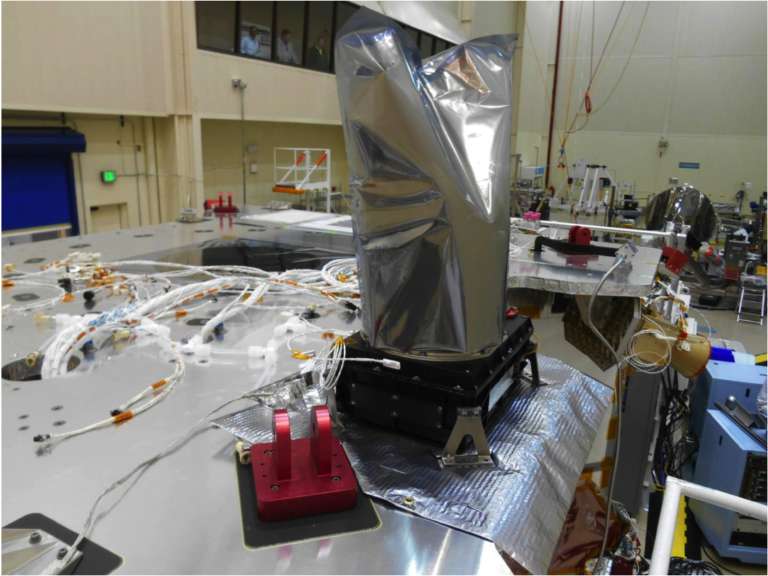Dante Lauretta • Sep 01, 2015
Populating the OSIRIS-REx Science Deck
The assembly of the OSIRIS-REx spacecraft continues, with many elements integrated onto the spacecraft ahead of schedule. Last month both OTES and OVIRS were delivered to Lockheed Martin and installed on the science deck. OTES had the honor of being the first science instrument to be placed on the spacecraft. Both OTES and OVIRS came in ahead of schedule, despite some adversity in their development.

Next on the spacecraft was the completed Sample Acquisition and Return Assembly, SARA for short. SARA is a standalone panel that contains the TAGSAM sampling mechanism and our Sample Return Capsule. These mission-critical items are first mounted onto their own panel before delivery to the spacecraft. This panel allows the two items to be properly aligned relative to one another, since they are involved in an important hand-off: TAGSAM must place the sampler head into the SRC capture ring, then detach the head for stowage and Earth return. This transfer, along with all the other motions that are required for sampling and stowage, are tested on the SARA panel assembly, prior to delivery to the spacecraft. Once the unit was complete, the entire panel was lifted by crane and set on top of the spacecraft science deck.

The other big activity this month was a fit check of the solar arrays. The arrays are large and, in general, block access to the interior of the spacecraft. For most of ATLO processing, they remain off the spacecraft in their own holding rack. However, the arrays need to be checked to make sure that the mechanical and electrical interfaces were built to design specifications. This week, one of the arrays was lifted by crane over to the spacecraft and installed. Everything went well with the fit check and the arrays are safely back in their storage location. The team is comfortable that they were built properly and will provide plenty of electricity for OSIRIS-REx during his long journey through space.

The most exciting event this week, at least for me, was the installation of OCAMS. Over the past four years I have watched OCAMS development down the hall from my office at the University of Arizona. OCAMS completed environmental testing and calibrations this month and was shipped out to Lockheed Martin. Prior to leaving Arizona, they posed for a family portrait during a media-viewing opportunity.


On August 27, 2015, I was delighted to watch the installation of OCAMS on the spacecraft. I tweeted about the process throughout the day – providing updates when each camera went on. I gathered with other members of the OCAMS team on the third-floor viewing gallery at Lockheed Martin to watch the cameras get on board. The only tense moment came when PolyCam was lifted up the ladder – this is a big camera and is only made heavier by its “Iron Man” suit of protection. These red components cover all of the optical elements for the three cameras – preventing dust and other contaminants from degrading the optical performance during ATLO. They will be removed prior to encapsulation in the launch vehicle fairing.

All in all it was flawless installation, with the three cameras and the control electronics making it on the spacecraft well in advance of when we originally planned these activities. In general, the OSIRIS-REx ATLO flow has gone smoothly. We are very close to completion of the spacecraft. System-level environmental testing should begin in October – stay tuned for more updates on the development of this awesome spacecraft!
Let’s Go Beyond The Horizon
Every success in space exploration is the result of the community of space enthusiasts, like you, who believe it is important. You can help usher in the next great era of space exploration with your gift today.
Donate Today

 Explore Worlds
Explore Worlds Find Life
Find Life Defend Earth
Defend Earth


